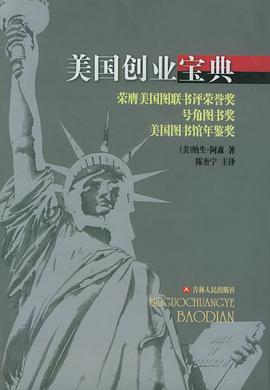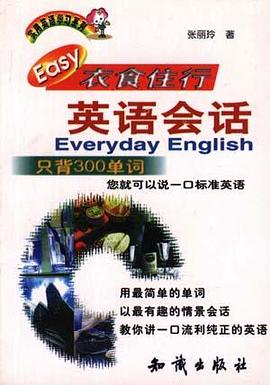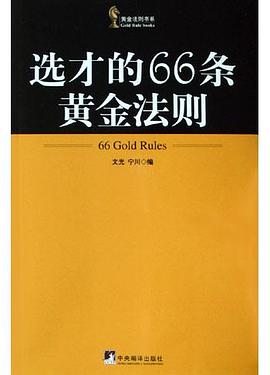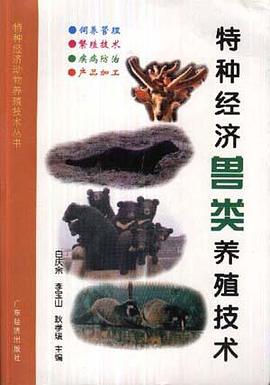

具体描述
作者简介
目录信息
Contents
Preface xiii
Acknowledgments xv
Nomenclature xvil
Chapter 1. The Hierarchy of Chemical Process Design
1.1 Introduction
1.2 Overall Process Design
1.3 The Hierarchy of Process Design and the Onion Model
1.4 Approaches to Process Design
1.5 The Hierarchy of Chemical Process Design-Summary
1.6 References
Chapter 2. Choice of Reactor
2.1 Reaction Path
2.2 Types of Reaction Systems
2.3 Reactor Performance
2.4 Idealized Reactor Models
2.5 Reactor Concentration
2.6 Reactor Temperature
2.7 Reactor Pressure
2.8 Reactor Phase
2.9 Catalysts
2.10 Practical Reactors
2.11 Choice of Reactor-Summary
2.12 References
Chapter 3. Choice of Separator
3.1 Separation of Heterogeneous Mixtures
3.2 Separation of Homogeneous Fluid Mixtures
3.3 Distillation
3.4 Distillation of Mixtures Which Exhibit Azeotroplc Behavior or Have
Low Relative Volatility
3.5 Absorption
3.6 Evaporators
3.7 Dryers
3.8 Choice of Separator-Summary
3.9 References
Chapter 4. Synthesis of Reaction-Separation Systems
4.1 The Function of Process Recycles
4.2 Vapor Recycles and Purges
4.3 Vapor versus Liquid Recycles
4.4 Batch Processes
4.5 The Process Yield
4.6 Synthesis of Reaction-Separation Systems-Summary
4.7 References
Chapter 5. Distillation Sequencing
5.1 Distillation Sequencing Using Simple Columns
5.2 Practical Constraints that Restrict Options
5.3 Selection of the Sequence for Simple, Nonintegrated Distillation
Columns
5.4 Heat Integration of Sequences of Simple Dlstillation Columns
5.5 Internal Mass Flows in Sequences of Simple Distillation Columns
5.6 Distillation Sequencing Using Columns with More than Two
Products
5.7 Distillation Sequencing Using Thermal Coupling
5.8 Optimization of a Reducible Structure
5.9 Distillation Sequencing-Summary
5.10 References
Chapter 6. Heat Exchanger Network and Utilities: Energy Targets
6.1 Composite Curves
6.2 The Heat Recovery Pinch
6.3 Threshold Problems
6.4 The Problem Table Algorithm
6.5 Process Constraints
6.6 Utllity Selection
6.7 Furnaces
6.8 Combined Heat and Power (Cogeneration)
6.9 Integration of Heat Pump
6.10 Integration of Refrigeration Cycles
6.11 Heat Exchanger Network and Utilities Energy Targets-Summary
6.12 References
Chapter 7. Heat Exchanger Network and Utilities: Capital and Total
Cost Targets
7.1 Number of Heat Exchange Units
7.2 Heat Exchange Area Targets
7.3 Number of Shells Target
7.4 Capltal Cost Targets
7.5 Total Cost Targets
7.6 Heat Exchanger Network and Utlllties Capital and Total Costs-
Summary
7.7 References
Chapter 8. Economic Tradeoffs
8.1 Local and Global Tradeoffs
8.2 Optimization of Reactor Converslon for Single Reactions
8.3 Optimizatlon of Reactor Converslon for Multiple Reactlons
Producing Byproducts
8.4 Optimization of Processes Involvlng a Purge
8.5 Batch Processes
8.6 Economic Tradeoffs-Summary
8.7 References
Chapter 9. Safety and Health Considerations
9.1 Fire
9.2 Explosion
9.3 Toxlc Release
9.4 Intenslficatlon of Hazardous Materials
9.5 Attenuation of Hazardous Materials
9.8 Quantitative Measures of Inherent Safety
9.7 Safety and Health Consideratlons-Summary
9.8 References
Chapter 10. Waste Minimization
10.1 Mlnimization of Waste from Reactors
10.2 Mlnlmlzatlon of Waste from the Separatlon and Recycle System
10.3 Minimizatlon of Waste from Process Operatlons
10.4 Minimizatlon of Utllity Waste
10.5 Life-Cycle Analysis
10.6 Waste Mlnlrnizatlon in Practlce
10.7 Waste Minlrnization-Summary
10.8 References
Chapter 11. Effluent Treatment
11.1 Inclneratlon
11.2 Treatment of Solid Particle Emlsslons to Atmosphere
11.3 Treatment of Gaseous Emlssions to Atmosphere
11.4 Treatment of Combustlon Product Emlssions
11.5 Treatment of Aqueous Emissions
11.6 Effluent Treatment-Summary
11.7 References
Chapter 12. Process Changes for Improved Heat Integration
12.1 The Plus/Minus Principle
12.2 The Tradeoffs Between Process Changes, Utlllty Selectlon, Energy
Cost, and Capital Cost
12.3 Process Changes for Improved Heat Integration-Summary
12.4 References
Chapter 13. Heat Integration of Reactors
13.1 The Heat Integration Characteristlcs of Reactors
13.2 Approprlate Placement of Reactors
13.3 Use of the Grand Composlte Curve for Heat Integration of Reactors
13.4 Evolvlng Reactor Deslgn to Improve Heat Integration
13.5 Heat Integratlon of Reactors-Summary
13.6 References
Chapter 14. Heat Integration of Distlllatlon Columns
14.1 The Heat Integration Characteristlcs of Dlstillation
14.2 Approprlate Placement of Olstlllation
14.3 Use of the Grand Composite Curve for Heat Integration of
Distillatlon
14.4 Evolving the Design of Slmple Dlstlllatton Columns to Improve Heat
Integratlon
14.5 Heat Pumping in Distillatlon
14.6 Evolving the Distlllatlon Sequence
14.7 Capital Cost Considerations
14.8 ACaseStudy
14.9 Heat Integration of Dlstlllation Columns-Summary
14.10 References
Chapter 15. Heat Integration of Evaporators and Dryers
15.1 The Heat Integratlon Characteristlcs of Evaporators
15.2 Approprlate Placement of Evaporators
15.3 Evolving Evaporator Design to Improve Heat Integration
15.4 The Heat Integration Characteristlcs of Dryers
15.5 Evolving Dryer Deslgn to Improve Heat Integration
15.6 ACaseStudy
15.7 Heat Integratlon of Evaporators and Dryers-Summary
15.8 References
Chapter 16. Heat Exchanger Network Design
16.1 The Pinch Deslgn Method
16.2 Deslgn for Threshold Problems
16.3 Stream Splltting
16.4 Design for Mulliple Pinches
16.5 Remaining Problem Analysis
16.6 Network Optimization
16.7 Heat Exchanger Network Design Based on the Optimlzation of
Reducible Stru'cture
16.8 Heat Exchanger Network Design-Summary
16.9 References
Chapter 17. Overall Strategy
17.1 Objectives
17.2 The Hierarchy
17.3 The Final Design
17.4 References
Appendix A. Preliminary Economic Evaluation
A.l The Role of Process Economics
A.2 Simple Economic Criteria
A.3 Operating Costs
A.4 Capltal Costs
A.5 References
Appendlx B Algorithm for the Heat Exchange Area Target
Appendix C. Maximum Thermal Effectlveness for 1-2 Shell-and-Tube
Heat Exchangers
Appendlx D. Expresslon for the Mlnlmum Number of 1-2 Shell-and
Tube Heat Exchangers for a Given Unit
Appendlx E. Algorithm for the Number-of-Shells Target
E.l Mlnlmum Area Target for Networks of 1-2 Shells
E.2 References
Appendlx F Algorithm for Heat Exchanger Capital Cost Target
Index
· · · · · · (收起)
Preface xiii
Acknowledgments xv
Nomenclature xvil
Chapter 1. The Hierarchy of Chemical Process Design
1.1 Introduction
1.2 Overall Process Design
1.3 The Hierarchy of Process Design and the Onion Model
1.4 Approaches to Process Design
1.5 The Hierarchy of Chemical Process Design-Summary
1.6 References
Chapter 2. Choice of Reactor
2.1 Reaction Path
2.2 Types of Reaction Systems
2.3 Reactor Performance
2.4 Idealized Reactor Models
2.5 Reactor Concentration
2.6 Reactor Temperature
2.7 Reactor Pressure
2.8 Reactor Phase
2.9 Catalysts
2.10 Practical Reactors
2.11 Choice of Reactor-Summary
2.12 References
Chapter 3. Choice of Separator
3.1 Separation of Heterogeneous Mixtures
3.2 Separation of Homogeneous Fluid Mixtures
3.3 Distillation
3.4 Distillation of Mixtures Which Exhibit Azeotroplc Behavior or Have
Low Relative Volatility
3.5 Absorption
3.6 Evaporators
3.7 Dryers
3.8 Choice of Separator-Summary
3.9 References
Chapter 4. Synthesis of Reaction-Separation Systems
4.1 The Function of Process Recycles
4.2 Vapor Recycles and Purges
4.3 Vapor versus Liquid Recycles
4.4 Batch Processes
4.5 The Process Yield
4.6 Synthesis of Reaction-Separation Systems-Summary
4.7 References
Chapter 5. Distillation Sequencing
5.1 Distillation Sequencing Using Simple Columns
5.2 Practical Constraints that Restrict Options
5.3 Selection of the Sequence for Simple, Nonintegrated Distillation
Columns
5.4 Heat Integration of Sequences of Simple Dlstillation Columns
5.5 Internal Mass Flows in Sequences of Simple Distillation Columns
5.6 Distillation Sequencing Using Columns with More than Two
Products
5.7 Distillation Sequencing Using Thermal Coupling
5.8 Optimization of a Reducible Structure
5.9 Distillation Sequencing-Summary
5.10 References
Chapter 6. Heat Exchanger Network and Utilities: Energy Targets
6.1 Composite Curves
6.2 The Heat Recovery Pinch
6.3 Threshold Problems
6.4 The Problem Table Algorithm
6.5 Process Constraints
6.6 Utllity Selection
6.7 Furnaces
6.8 Combined Heat and Power (Cogeneration)
6.9 Integration of Heat Pump
6.10 Integration of Refrigeration Cycles
6.11 Heat Exchanger Network and Utilities Energy Targets-Summary
6.12 References
Chapter 7. Heat Exchanger Network and Utilities: Capital and Total
Cost Targets
7.1 Number of Heat Exchange Units
7.2 Heat Exchange Area Targets
7.3 Number of Shells Target
7.4 Capltal Cost Targets
7.5 Total Cost Targets
7.6 Heat Exchanger Network and Utlllties Capital and Total Costs-
Summary
7.7 References
Chapter 8. Economic Tradeoffs
8.1 Local and Global Tradeoffs
8.2 Optimization of Reactor Converslon for Single Reactions
8.3 Optimizatlon of Reactor Converslon for Multiple Reactlons
Producing Byproducts
8.4 Optimization of Processes Involvlng a Purge
8.5 Batch Processes
8.6 Economic Tradeoffs-Summary
8.7 References
Chapter 9. Safety and Health Considerations
9.1 Fire
9.2 Explosion
9.3 Toxlc Release
9.4 Intenslficatlon of Hazardous Materials
9.5 Attenuation of Hazardous Materials
9.8 Quantitative Measures of Inherent Safety
9.7 Safety and Health Consideratlons-Summary
9.8 References
Chapter 10. Waste Minimization
10.1 Mlnimization of Waste from Reactors
10.2 Mlnlmlzatlon of Waste from the Separatlon and Recycle System
10.3 Minimizatlon of Waste from Process Operatlons
10.4 Minimizatlon of Utllity Waste
10.5 Life-Cycle Analysis
10.6 Waste Mlnlrnizatlon in Practlce
10.7 Waste Minlrnization-Summary
10.8 References
Chapter 11. Effluent Treatment
11.1 Inclneratlon
11.2 Treatment of Solid Particle Emlsslons to Atmosphere
11.3 Treatment of Gaseous Emlssions to Atmosphere
11.4 Treatment of Combustlon Product Emlssions
11.5 Treatment of Aqueous Emissions
11.6 Effluent Treatment-Summary
11.7 References
Chapter 12. Process Changes for Improved Heat Integration
12.1 The Plus/Minus Principle
12.2 The Tradeoffs Between Process Changes, Utlllty Selectlon, Energy
Cost, and Capital Cost
12.3 Process Changes for Improved Heat Integration-Summary
12.4 References
Chapter 13. Heat Integration of Reactors
13.1 The Heat Integration Characteristlcs of Reactors
13.2 Approprlate Placement of Reactors
13.3 Use of the Grand Composlte Curve for Heat Integration of Reactors
13.4 Evolvlng Reactor Deslgn to Improve Heat Integration
13.5 Heat Integratlon of Reactors-Summary
13.6 References
Chapter 14. Heat Integration of Distlllatlon Columns
14.1 The Heat Integration Characteristlcs of Dlstillation
14.2 Approprlate Placement of Olstlllation
14.3 Use of the Grand Composite Curve for Heat Integration of
Distillatlon
14.4 Evolving the Design of Slmple Dlstlllatton Columns to Improve Heat
Integratlon
14.5 Heat Pumping in Distillatlon
14.6 Evolving the Distlllatlon Sequence
14.7 Capital Cost Considerations
14.8 ACaseStudy
14.9 Heat Integration of Dlstlllation Columns-Summary
14.10 References
Chapter 15. Heat Integration of Evaporators and Dryers
15.1 The Heat Integratlon Characteristlcs of Evaporators
15.2 Approprlate Placement of Evaporators
15.3 Evolving Evaporator Design to Improve Heat Integration
15.4 The Heat Integration Characteristlcs of Dryers
15.5 Evolving Dryer Deslgn to Improve Heat Integration
15.6 ACaseStudy
15.7 Heat Integratlon of Evaporators and Dryers-Summary
15.8 References
Chapter 16. Heat Exchanger Network Design
16.1 The Pinch Deslgn Method
16.2 Deslgn for Threshold Problems
16.3 Stream Splltting
16.4 Design for Mulliple Pinches
16.5 Remaining Problem Analysis
16.6 Network Optimization
16.7 Heat Exchanger Network Design Based on the Optimlzation of
Reducible Stru'cture
16.8 Heat Exchanger Network Design-Summary
16.9 References
Chapter 17. Overall Strategy
17.1 Objectives
17.2 The Hierarchy
17.3 The Final Design
17.4 References
Appendix A. Preliminary Economic Evaluation
A.l The Role of Process Economics
A.2 Simple Economic Criteria
A.3 Operating Costs
A.4 Capltal Costs
A.5 References
Appendlx B Algorithm for the Heat Exchange Area Target
Appendix C. Maximum Thermal Effectlveness for 1-2 Shell-and-Tube
Heat Exchangers
Appendlx D. Expresslon for the Mlnlmum Number of 1-2 Shell-and
Tube Heat Exchangers for a Given Unit
Appendlx E. Algorithm for the Number-of-Shells Target
E.l Mlnlmum Area Target for Networks of 1-2 Shells
E.2 References
Appendlx F Algorithm for Heat Exchanger Capital Cost Target
Index
· · · · · · (收起)
读后感
评分
评分
评分
评分
评分
用户评价
评分
还行吧。
评分还行吧。
评分还行吧。
评分还行吧。
评分还行吧。
相关图书
本站所有内容均为互联网搜索引擎提供的公开搜索信息,本站不存储任何数据与内容,任何内容与数据均与本站无关,如有需要请联系相关搜索引擎包括但不限于百度,google,bing,sogou 等
© 2025 book.quotespace.org All Rights Reserved. 小美书屋 版权所有




















